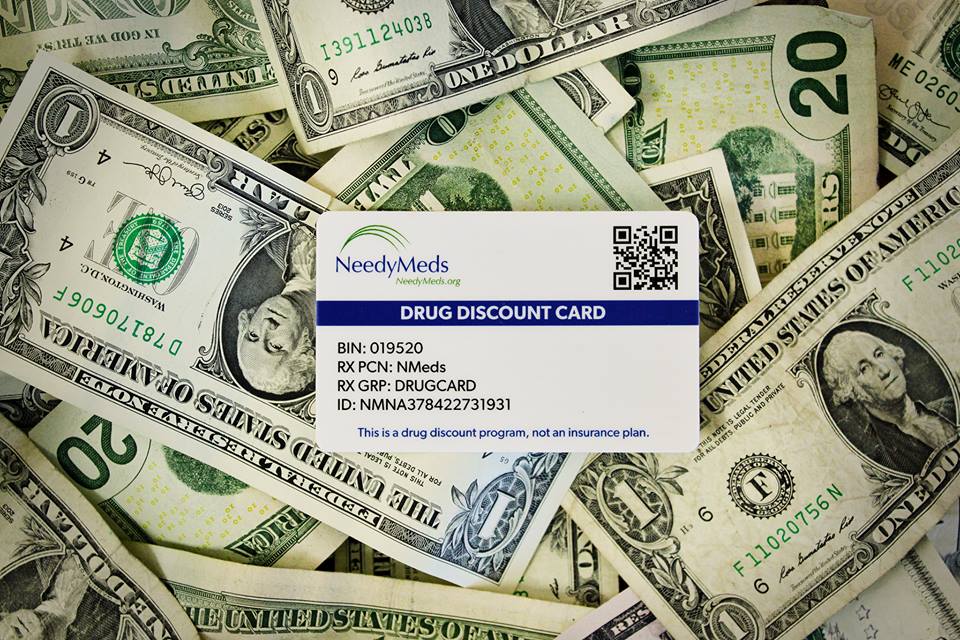Last Updated on August 18, 2020
Anyone looking to save on medication costs, and that is probably you if you are reading this article, has seen the same methods listed in article after article. They include shopping around for the best price, switching to generics, splitting pills, applying to assistance programs, using a drug discount card or copay cards, etc.
I’ll explain some different ways to save you may not have seen before. They may be a little more complex than the methods listed above – and may require some conversations with your prescriber or pharmacist. In addition to the cost savings these methods will provide, they will also give you better understanding of your treatments and the medicines you take.
1. Treating the Symptom or Treating the Cause
When you are sick and feeling miserable, you want one thing – to feel better. Your healthcare provider may give you a medicine that lessens your symptoms – called symptomatic treatment. Examples include an antihistamine or a decongestant which may help with the runny or congested nose of a cold, an anti-diarrheal medicine may help with the runs associated with a stomach bug or an anti-itch medicine may help with the itch of a rash or insect bite.
While all of these treatments may make you feel a little better, they do nothing to speed up the healing process, may actually delay healing, and certainly help to empty your wallet. These symptomatic treatments are optional. It’s up to you whether you want to spend your money on them or not.
2. Do You Really Need That Medicine?
It’s important to remember that not every medical problem needs to be treated. The body has remarkable healing powers. Daily we are exposed to all sorts of germs, most of which the body deals with just fine. Many aches and pains are the results of normal activities and don’t need any treatment except ice, heat, or rest.
One common example is lower back pain. It’s very common and rarely serious. Around 80% of adults experience it at one time or another and at any moment 15% to 20% of adults 45 to 64 have back pain. According to the Cleveland Clinic, 60% of back pain sufferers recover in 1 to 3 weeks, 90% in 6 to 8 weeks, and 95% in 12 weeks. The treatment received, or no medical treatment, makes no difference. Less than 1% of back pain has a serious and treatable cause.
Most minor respiratory problems, stomach problems, sore throats, and other self-limiting illnesses don’t need any treatment by a healthcare provider. It’s rare for a person experiencing self-limiting and self-resolving symptoms to be afflicted with a serious illness. You’ll do just as well without any treatment.
3. Polypharmacy and Deprescribing
“Polypharmacy” is the use of many drugs. The definition of “many” depends on who’s defining the term, but the cut-off is generally five or six drugs. There are many causes of polypharmacy. These include:
- treating multiple diagnoses at the same time;
- taking drugs not prescribed for you;
- excessive use of over-the-counter drugs and supplements;
- multiple prescribers caring for you with no one prescriber overseeing the medications;
- lack of stopping no longer needed or ineffective drugs.
“Deprescribing” is the opposite of polypharmacy. It’s the stopping of no longer needed medicines. The process of deprescribing involves evaluating each drug, asking if it is helping keep you happy and healthy or if it’s no longer needed. Examples of unnecessary drugs include drugs used to treat a now-resolved issue, an ineffective drug that was never stopped, or a drug used to treat a now-resolved side-effect of a drug.
While polypharmacy will increase your medication costs, proper deprescribing offers the opportunity to lower your medication costs by eliminating unnecessary medications. Added benefits of deprescribing include reducing the risk of side-effects and potentially serious drug interactions.
4. Combination Drugs
While most medicines contain a single active ingredient, there are some that contain two drugs that are used in combination to treat a specific ailment. For example, some creams or ointments for skin conditions may contain a steroid plus another active ingredient. There are also blood pressure medicines that contain a diuretic plus another blood pressure drug.
The advantage of combination drugs is better compliance because you only need to take one pill rather than two, or you only have to apply one cream or ointment instead of two. The disadvantage is that sometimes you have to pay for this convenience because the cost of the combination product is greater than what you would pay if you bought each drug separately.
Always check to see what’s cheaper – the combination medicine or buying each drug separately. Sometimes the combination is cheaper, but often it’s not. The difference is what you pay for convenience.
5. OTC vs. Prescription
Regularly the Food and Drug Administration (FDA) is approving over-the-counter (OTC) versions of medications that formerly were available only by prescription. For example, look at all the non-steroidal anti-inflammatory drugs and acid suppressors. All used to be available only by prescription – but not any longer.
There are two differences between the OTC and the prescription versions. One is the dosage. The OTC drugs usually contain around half as much active ingredient as the prescription version. OTC ibuprofen pills, for example, contain 200 milligrams of the active ingredient while the prescription version contains 400mg, 600mg, or 800mg.
The second difference is the price. Often, but not always, the OTC is cheaper than the prescription version milligram for milligram. But this isn’t always the case. With most of these drugs being a tier 1 drug in insurance plans, the copayment may make the prescription version cheaper than the OTC version. It pays to check and see.
Another reason to consider the prescription version of a drug also available over-the-counter is that your insurance may pay for the prescription version, but not the OTC version.
6. Supplements
In this category, we include most vitamins, herbal supplements, weight loss pills, immune-boosting products, muscle building supplements, etc. They are considered “dietary supplements” and have not been evaluated by the FDA for safety or efficacy. According to FDA regulations, they should contain the warning “These statements have not been evaluated by the Food and Drug Administration. This product is not intended to diagnose, treat, cure, or prevent any disease.”
Another way to put it is that these products are assumed safe until proven otherwise. “Assumed safe” should not be confused with “being safe.” Rather, it means we don’t know if they are safe because they haven’t tested them for safety. All too often they turn out to be unsafe or not an effective treatment.
In fact, supplements are one of the major causes of liver disease. They don’t work and may interfere with your prescribed medications. The bottom line is that you shouldn’t waste your money on them.
7. Don’t Buy More Than You Need
There are many reasons why you may stop taking a medicine prescribed for you. It may not work, you may have side-effects, or it may interfere with another medicine you are taking. So you end up disposing of all the untaken portions of the prescription. It’s like throwing money away.
When starting on a new medication it’s best to ask the pharmacist if it might interact with any other drug you are taking. In many cases you can get less than the number of pills prescribed to give the medication a “trial.” If the medication causes no problems and is effective then you can have the rest of the prescription filled.
You can also ask the prescriber if samples are available. If so, you might be able to get a week or so of free medicine to try before you spend money.
When buying OTC medicines you shouldn’t buy more than you need. The price per pill is less when you buy a larger bottle of pills, but the savings is lost if you only take a few and the rest go unused until they expire.
Bonus Idea #1 – Clinical Trials
The FDA puts all new drugs through an intensive testing process before they are approved. Although initial phases of this process start with testing on lab animals, the later phases involve testing on humans.
People enrolled in these studies receive free medical care, medications, and follow-up. Depending on the study, participants may receive new drugs with the potential of improved treatment.
All these studies must be approved by the FDA and by at least one institutional review board (IRB). This protects the participants and ensures the testing protocols are ethical.
You can find out about these studies at www.clinicaltrials.gov.
Bonus Idea #2 – Lifestyle Changes
The best way to save on medication costs is to stay healthy and not need medicines. According to the book Exposing 20 Medical Myths, “…about 40 percent of our life expectancy is determined by things we do (or things done to us) – things like smoking, drinking, doing drugs, being obese, being a victim of violence or accidents. Another 30 percent is due to our genetics. Social circumstances (such as living in wealth or poverty) determine 15 percent of our life expectancy, and environmental exposures (whether or not you live around lots of pollution) account for another 5 percent.”
That leaves 10 percent to medical care. But that 10 percent can be more expensive than the cost of the other 90 percent. The best way to control the cost of this 10 percent is to control the things we can control – the lifestyles that are detrimental to our health. Lifestyle changes such as quitting or not smoking, regular exercise, good eating habits, and getting enough rest may not be easy, but they are not costly.
Lifestyle changes are the first step in treating adults with diabetes or high blood pressure. For some patients weight loss and diet along with smoking cessation and increased exercise are all that’s needed to control these conditions. Lifestyle changes are cheap and may even put extra money in your pocket.
Summary
That’s my list of ways you can control your healthcare costs – and in some ways your health. Although some may be difficult, all are achievable. And the added benefit to saving money is living a longer and healthier life.
 Richard J. Sagall, MD, is the president and co-founder of NeedyMeds. He spent 25 years practicing family and occupational medicine. He now devotes his time to NeedyMeds.
Richard J. Sagall, MD, is the president and co-founder of NeedyMeds. He spent 25 years practicing family and occupational medicine. He now devotes his time to NeedyMeds.




1 Comment
Hello!
I work as a pharmacy technician and I love your website and blog. I will recommend your organization to all my patients. The big chain pharmacy I work at is pushing a lot of supplements on patients and I am worried about polypharmacy and the issues you raised in August blog entry. What can patients do when they cannot afford the medicine they need? We need more non-profit local pharmacies that can give out medications like insulin and inhalers at no cost and also accept donated medicines. Do you have a model of how to start a physical location non-profit pharmacy? Thank you very much. Rita.